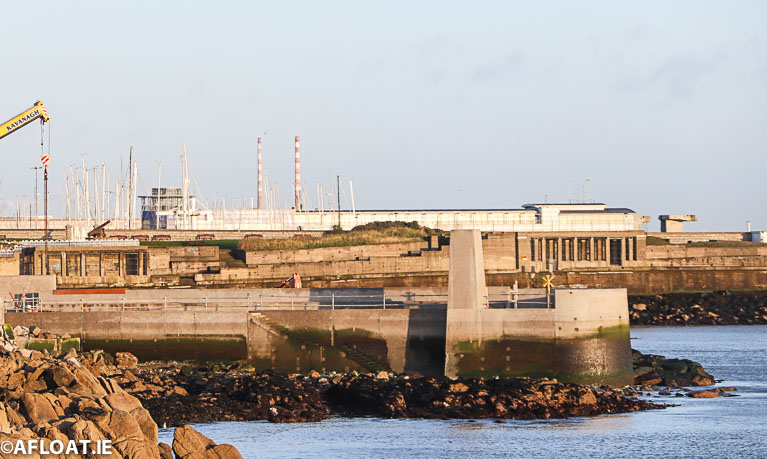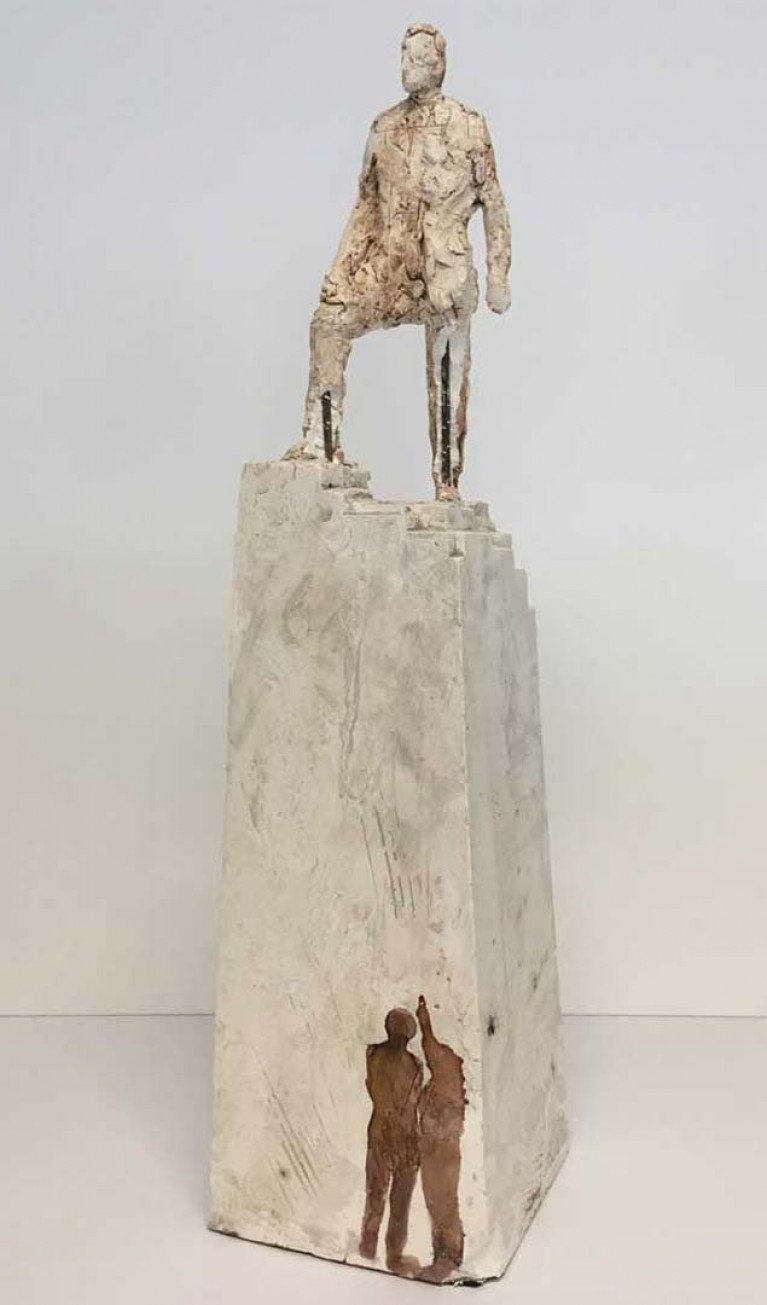A special plinth has been completed on Dun Laoghaire's newest pier at the old Victorian baths site for the statue of Roger Casement.
In 2016, Dún Laoghaire-Rathdown County Council commissioned a statue of the Irish nationalist, who was sentenced to death in 1916 for his role in planning the Easter Rising.
As regular Afloat readers will know, the statue is to be erected along the pierhead walkway connecting the parkland areas at Newtownsmith with the beach area at Queen’s Road.
The redevelopment of Dún Laoghaire’s baths, which have been closed since 1997, are nearing completion even though construction has stopped during the COVID-19 emergency.
The €2.75 million makeover will see the derelict pool being replaced by artists’ studios and a gallery café aswell as a pier to swim from and a landing jetty for small boats and kayaks.
Casement was born to an Anglo-Irish family in nearby Sandycove in 1864 and served as a British diplomat before helping to form the Irish Volunteers.
 The new plinth at the end of the pierhead is the location of the new Roger Casement statue in Scotsman's Bay Photo: Afloat
The new plinth at the end of the pierhead is the location of the new Roger Casement statue in Scotsman's Bay Photo: Afloat
Dún Laoghaire-Rathdown County Council commissioned the sculpture of Roger Casement, who was born in Sandycove, to commemorate the part he played in the 1916 Rising.
The winning artist, Mark Richards, was selected following a two-stage process, organised by Visual Artists Ireland on behalf of DLR. Four artists were shortlisted from 40 submissions to a call for expressions of interest. The sculpture will be a figurative representation of Roger Casement and will measure 3m in height, just over 1.5 life-size.
 The new Roger Casement statue by Mark Richards for Dun Laoghaire Baths
The new Roger Casement statue by Mark Richards for Dun Laoghaire Baths
The figure will be cast in bronze, which will mature and reflect the climatic conditions of the site as the years pass.
An Cathaoirleach of dlr, Cllr Tom Muphy, said, I think Mark Richards is a very worthy winner of the selection process. His design encapsulates the very essence of Roger Casement as he stood on the dock and said the words, “I landed in Ireland. It was to Ireland I came; to Ireland, I wanted to come.” Furthermore, by locating the piece amidst the arrangement of levels on the jetty at Dún Laoghaire Baths, suggests he is stepping ashore.”
The plinth will be inscribed in Irish on the west face and English on the north face. A QR code linking to a website that tells of the story of Roger Casement will be developed.


























































